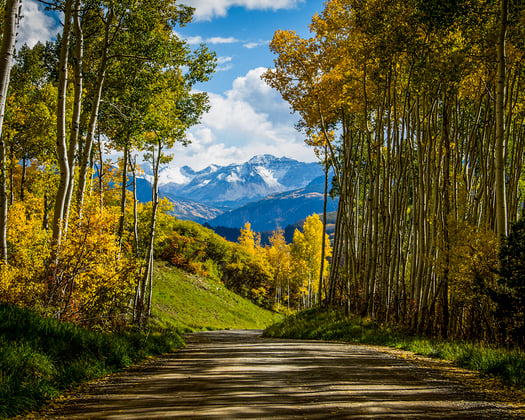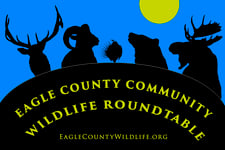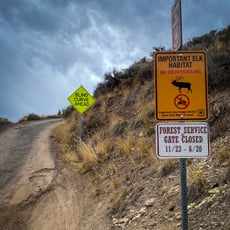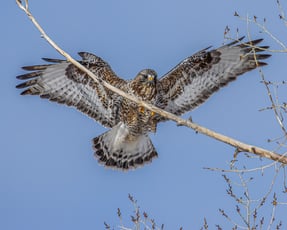Closures!
Read this article in Spanish here.
What a spectacular area we live in. Recreational opportunities...


We in Colorado are lucky. Our state has 44 Congressionally designated Wilderness Areas covering over 3.7 million acres, including three in Eagle County – the west side of the Eagles Nest, the Holy Cross, and a small portion of the Flat Tops Wilderness Areas. In neighboring Summit County lies the east side of the Eagles Nest and the Ptarmigan Peak Wilderness Areas. Sometimes we take these special places for granted. We shouldn’t. Less than 3% of the total land in the lower 48 States (and 6% of Colorado) are designated Wilderness. Until the great Western expansion of the United States in the middle of the 19th Century, 100% of the western United States was wilderness. Now less than 3% remain.

For Bighorn and other wildlife, Wilderness Areas are now their only safe haven.
As part of “taming” the wild, forests were clear-cut, mines developed, farms and cities established, and roads built over what had been wild intact ecosystems. The widespread ownership of cars brought more and more people and development farther and farther into what was wilderness. More and more people came to Colorado. In 1890, the population of Eagle County was 1,890 people. By 1970, it had grown to 7,498. Now it is over 53,000.
By the early 1960’s roads had been built across much of Colorado and the rest of the country. There was a growing concern that soon no roadless areas would be left where nature could remain dominant and true wildness experienced. The Western culture of wild lands was in threat of extinction.
 As part of “taming” the wild, forests were clear-cut, mines developed, farms & cities established, and railroads were built to support the westward movement.
As part of “taming” the wild, forests were clear-cut, mines developed, farms & cities established, and railroads were built to support the westward movement.
As a result, in 1964 Congress enacted and President Lyndon Johnson signed the Wilderness Act to save at least some of our historic wild places. It was approved by an overwhelming 374 to 1 vote in the House and 73 to 12 vote in the Senate. 2024 was the 60th Anniversary of the Act.
The preamble of the Act clearly states its purpose: “In order to assure that an increasing population, accompanied by expanding settlement and growing mechanization, does not occupy and modify all areas within the United States and its possessions, leaving no lands designated for preservation and protection in their natural condition, it is hereby declared to be the policy of the Congress to secure for the American people of present and future generations the benefits of an enduring resource of wilderness.”
To accomplish this goal, the 1964 Act prohibited construction of roads in Wilderness Areas, and banned motor vehicles, motorized equipment, landing of aircraft, use of any other form of mechanical transportation, and any man-made structures or installations.
Since 1964, the National Wilderness Preservation System has grown from an initial 54 Wilderness Areas to over 800. But what, aside from nostalgia for the “good old days,” are the benefits and value of Wilderness? If we cannot use these lands as we want, what good are they?

Roads and any mechanized form of travel are prohibited through wilderness areas.
The benefits and values are many and varied. Wilderness Areas are some of the last semi-intact ecosystems in the Lower 48 States. The more we learn about the natural world, the more we find that it is interconnected. Wildlife relies on plants, which rely on naturally flowing streams, which rely on wetlands and vegetation, which rely on bugs, which rely on decaying matter, which rely on dead trees, which come in part from natural wildfires, which make way for the natural progression of plants, and so on. Once humans alter this web of life, the whole ecosystem can fail. If we care about the natural world, and even ourselves, we should care about Wilderness.
Moreover, most of the streams from which we get our own drinking water arise in Wilderness Areas. Wetlands and undisturbed soils store and filter that water, helping to lessen floods and improve water quality. Billions of dollars are saved by such eco-benefits.
Wilderness Areas also teach us about the processes by which nature heals itself. How does nature react and adapt to natural fire and floods, to climate change, to the introduction of invasive species? What can we learn from nature if we leave it to its own devices? What secrets does nature hold for the development of new medicines? Wilderness Areas are also the last refuge for many species of flora and fauna that we have driven to near extinction.
And what about our own health, both physical and mental? In this hustle and bustle world, Wilderness is an escape, a salve, a place to contemplate and reflect, and a place to reconnect with the natural world from which we evolved and have lived in for generations. Rip a plant out of the ground and it dies. Take a person out of the natural world and a part of us also withers away.
 The 1964 Act prohibited the construction of roads in Wilderness Areas and any man-made structures or installations.
The 1964 Act prohibited the construction of roads in Wilderness Areas and any man-made structures or installations.
Wilderness gives us perspective and humility. We are faced with a world bigger, older, and more complex than our mechanical world. And human time is dwarfed by geological time. One cannot stand in the presence of a 180-foot blue spruce or a 14,000-foot peak and feel big. One cannot lie in a tent while rain pounds down and thunder echoes off the canyon walls and feel important. Don’t the animals for whom Wilderness Areas are now their only safe havens also have the right to live? We can drive our cars, build our homes, and experience our favorite mechanized sport in the 97% of America that is outside Wilderness Areas. Can we not restrain ourselves from irretrievably altering for our own selfish pleasures the other 3%?
In the end, Wilderness puts us in our place, but only if we allow it to. We could build that road, or drill that bolt, or dam that river, but self-restraint provides the opportunity for deeper pleasures, and even wisdom. Just as a parent often strengthens a child by saying no, the 1964 Wilderness Act can lead us to greater understanding and humility by forcing us to pause, reconnect with, and learn from the natural world.
So slow down, breathe deeply, and immerse yourself in Nature. Wilderness and wonder await you.
The author, Mike Browning, is a member of the Eagle County Community Wildlife Roundtable and is also on the Board of Directors of the Eagle Summit Wilderness Alliance, Eagle River Coalition, and Wilderness Watch. He lives in East Vail.
The Eagle County Community Wildlife Roundtable is a collaborative partnership with the White River National Forest, Colorado Parks and Wildlife, Bureau of Land Management, local government entities, community members, and citizen scientists. The purpose of the Eagle County Community Wildlife Roundtable is to gather a group of diverse stakeholders in the valley to understand and address issues facing wildlife populations. Together we will identify a shared vision and realistic actions that the community can rally around to support wildlife. We want to leverage diverse values, creativity, and resources to move toward positive action.

The Eagle County Community Wildlife Roundtable is a collaborative partnership with the White River National Forest, Colorado Parks and Wildlife, Bureau of Land Management, local government entities, community members, and citizen scientists. The purpose of the Eagle County Community Wildlife Roundtable is to gather a group of diverse stakeholders in the valley to understand and address issues facing wildlife populations. Together we will identify a shared vision and realistic actions that the community can rally around to support wildlife. We want to leverage diverse values, creativity, and resources to move toward positive action.


Read this article in Spanish here.
What a spectacular area we live in. Recreational opportunities...


This year I have become even more convinced that much of the wildlife in Eagle County and other...